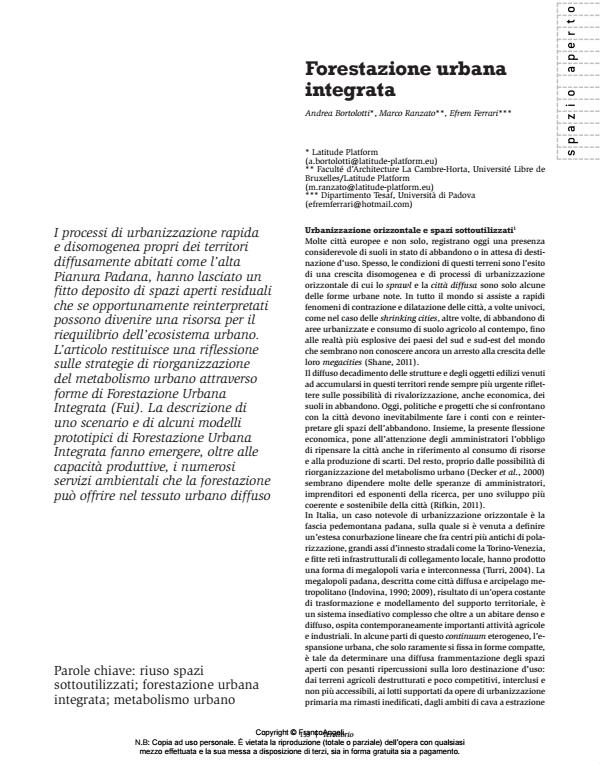Forestazione urbana integrata
Titolo Rivista TERRITORIO
Autori/Curatori Andrea Bortolotti, Marco Ranzato, Efrem Ferrari
Anno di pubblicazione 2014 Fascicolo 2013/67
Lingua Italiano Numero pagine 9 P. 133-141 Dimensione file 2437 KB
DOI 10.3280/TR2013-067022
Il DOI è il codice a barre della proprietà intellettuale: per saperne di più
clicca qui
Qui sotto puoi vedere in anteprima la prima pagina di questo articolo.
Se questo articolo ti interessa, lo puoi acquistare (e scaricare in formato pdf) seguendo le facili indicazioni per acquistare il download credit. Acquista Download Credits per scaricare questo Articolo in formato PDF

FrancoAngeli è membro della Publishers International Linking Association, Inc (PILA)associazione indipendente e non profit per facilitare (attraverso i servizi tecnologici implementati da CrossRef.org) l’accesso degli studiosi ai contenuti digitali nelle pubblicazioni professionali e scientifiche
The processes of rapid and uneven urbanisation found in the diffusely inhabited areas of the Upper Po Plain have left a dense deposit of residual outdoor spaces, which if reinterpreted appropriately could become a resource to restore balance to the urban ecosystem. The paper discusses strategies for the reorganisation of urban metabolism by means of forms of integrated urban forestation (Fui). The description of a scenario and of some prototype models of integrated urban forestation highlights not only the production capacities but also the numerous environmental services which forestation can offer in a diffuse urban area.
Parole chiave:Reuse of underused spaces; integrated urban forestation; urban metabolism
Andrea Bortolotti, Marco Ranzato, Efrem Ferrari, Forestazione urbana integrata in "TERRITORIO" 67/2013, pp 133-141, DOI: 10.3280/TR2013-067022